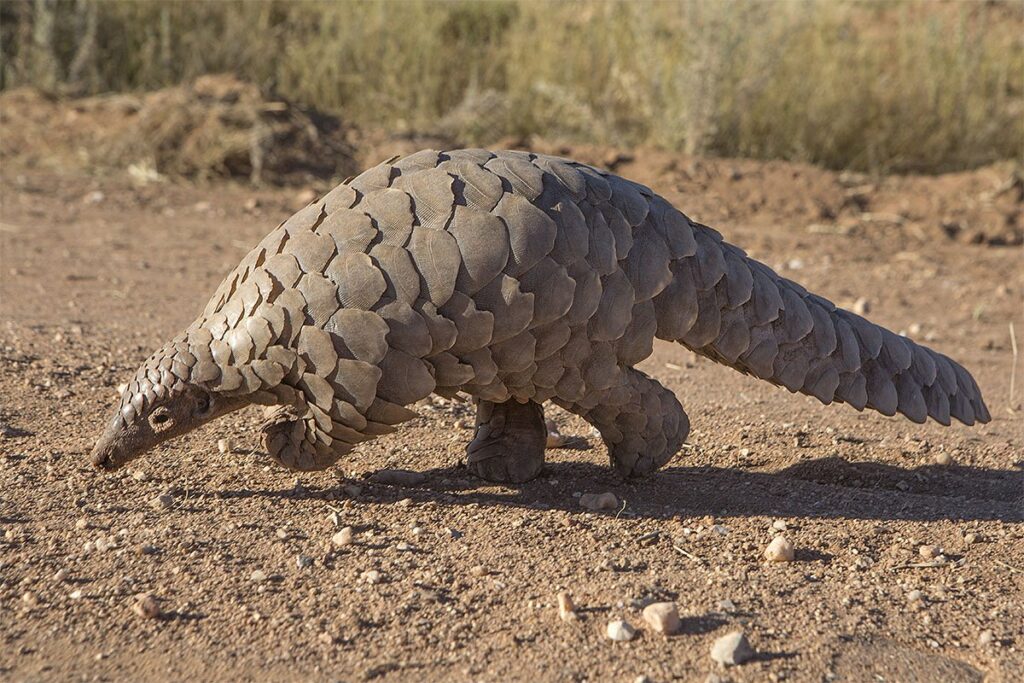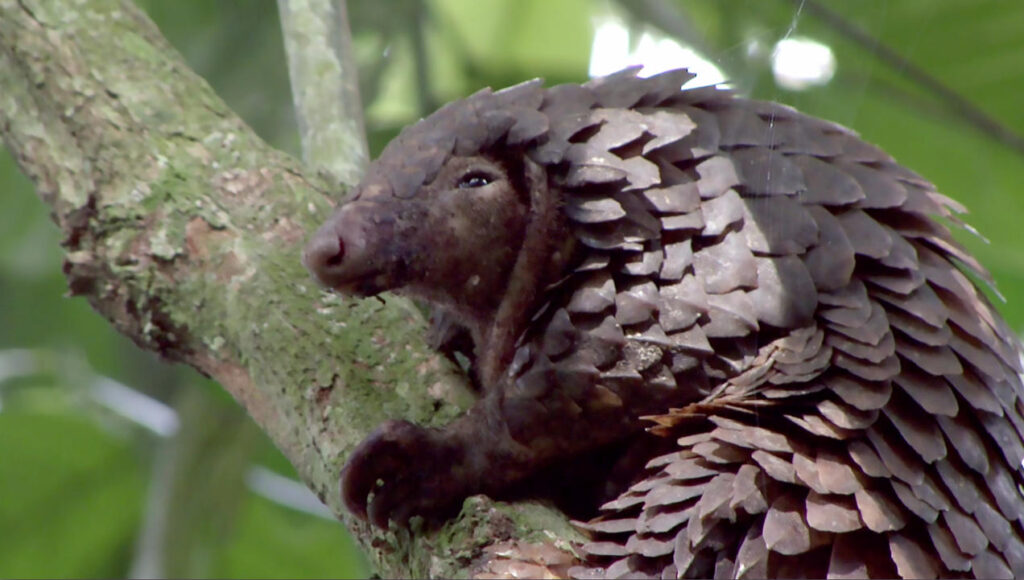Pangolins are a precious mammal that has quite some interesting features that attract researchers and observers alike. But unfortunately, its unique traits also make it susceptible to poaching and illegal trafficking. Its trade has been going on for quite a while and is putting this species at risk. Here are some facts about the pangolin and the harmful activities that are threatening it.
What you need to know about this mammal:
Pangolin, the world’s most trafficked mammal, weighs 4 to 72 pounds and 45 inches to 4.5 feet long in size. It was thought to be a reptile because of its lizard-like appearance, but despite the scaly skin, the pangolin is indeed a mammal and known as Scaly Anteater. They considerably vary in size. Some of them are as small as a house cat, while others as big as a medium-sized dog. They are insectivorous and feed upon ants and termites. They use their long tongue to lap up the insects they excavate from mounds with their powerful front claws, and their mode of living is mainly nocturnal.
Their gestation period varies among species and mostly thought to last between 69–150 days. At the time of birth, the babies weigh around 8-450 grams (about 3-16 ounces), depending on the species, and have soft scales that harden rapidly. Young pangolins are usually weaned at around three months of age and reach sexual maturity after two years.
Pangolins are covered in as many as thousands of scales, which protect them from predators, especially big cats. When threatened, a natural pangolin defense is to curl up into a ball. That is why they take up their name from the Malay word “pengguling,” meaning “something that rolls up.” Due to sharp edges, they can slice the skin of a predator or human when attacked. Another defense mechanism includes the secretion of stinky fluids from their glands present near the anus, which they also use this pungent odorous secretion to mark their territory.

Types of Pangolin Species:
There are eight species of pangolin known on the planet. Together, the eight species comprise their very own Order: Pholidota. All eight species of pangolin are listed on the International Union of Conservation of Nature (IUCN) Red List, with designations ranging from Vulnerable to Critically Endangered.
Four of them are found in Asia including:
- Indian Pangolin or thick-tailed pangolin, scientific name Manis crassicaudata — entitled as ‘Near Threatened’
- Philippine Pangolin, Manis culionensis — ‘Near Threatened’
- Sunda Pangolin (also called Malayan Pangolin), Manis javanica — ‘Endangered’
- Chinese Pangolin, Manis pentadactyla — ‘Endangered’
Four others live in Africa:
- Three-Cusped Pangolin also called African White-Bellied Pangolin and Tree Pangolin), Phataginus tricuspis — ‘Near Threatened’
- Giant Ground Pangolin, Smutsia gigantea — ‘Near Threatened’
- Cape Pangolin also called Temminck’s Pangolin, Smutsia temminckii — ‘Least Concern’
- Long-Tailed Pangolin or Black-Bellied Pangolin, Uromanis tetradactyla — ‘Least Concern’
The Illegal Trade:
Unfortunately, there is one predator that pangolins are not able to protect themselves against i.e., “Humans”. According to some estimates, poachers have hunted more than 1 million pangolins in the past decade. Poaching refers to the processing in which pangolins are boiled for scales removal, which are then dried and roasted for further usage more specifically for traditional Asian medicines. They are traded as either live animals, dead bodies, scales, trophies, carvings, skin, or leather goods. In addition to this, some pangolins have also been traded internationally as zoo animals.
Poachers use illegal trafficking routes that span the globe, frequently shifting routes to evade law enforcement. The Chinese and the Sunda pangolins are the most endangered of all eight species. In the case of the latter, their numbers began to decrease quite rapidly around 1990, and the population has been halved over just the past 15 years.

According to the International Union of Conservation of Nature (IUCN) reports, Chinese pangolins have also significantly been reduced over this period. Despite being protected by Convention on International Trade in Endangered Species (CITES), an organization working for the regulation of wildlife trade, poaching is still decimating these and other species. In 2012, Pangolin Specialist Group was formed the IUCN’s Species Survival Commission, comprising 100 experts from 25 countries and hosted by the Zoological Society of London.
In 2014, it also coordinated an annual awareness day, World Pangolin Day, on February 15. In 2016, the international treaty on wildlife trade, CITES, voted to ban all commercial trade in pangolins across the borders and added all species into Appendix I. However, these creatures continue to be poached at an alarming rate, even causing a devastating crash in Asian pangolins populations. Recently poachers have increasingly turned to African species. The most massive confiscation of pangolins scales occurred in 2017, which according to one estimate, came from about 20,000 African pangolins. Their conservation prospects get worse as pangolins face habitat loss and also reproduce slowly, giving birth to only one baby per year. Those who deal with the trade of this precious mammal, usually belong to worldwide criminal networks that are pushing various animals towards the verge of extinction.
According to CNN’s John D. Sutter,
“The pangolin needs an international celebrity to survive, and the CITES vote is a critical step toward achieving that celebrity.”
Loss of pangolins could prove to be an ecological and economic disaster for local communities as pangolins eat termites being insectivores that might otherwise destroy crops and buildings. Pangolins also suffer abuses in the wildlife trade, such as force-feeding and injuries from snares. A few lucky pangolins survive being trafficked. Confiscated pangolins in Vietnam, for example, are sent to a rescue center and returned to the wild.
How they are used:
All eight species found in tropical Asia and Sub-Saharan Africa are now at risk of extinction. Pangolins are killed for a variety of uses, from medicine to luxury goods with the greatest demand in China and Vietnam. Pangolins scales often powdered or made into a paste are prescribed in traditional medicine or ethnomedicine for variety of diseases including arthritis, epilepsy, convulsion and stomach disorders. It also used to relieve menstrual pain and stimulate wound healing and lactation. However, these remedies have no specific basis. Pangolin’s skin or leather is also used in the garment industry.
In fact, pangolin scales are made of keratin, the same protein, which is also found in human hair and fingernails. Pangolin fetuses sometimes consumed in the soup are erroneously thought to enhance a man’s virility. But only the wealthy can afford to eat pangolins, which is consumed in parts of Asia to demonstrate social status. Pangolin wine is produced by boiling rice wine with a baby pangolin, and it is thought to be effective in wound healing and improving breathing.
There is a lot of work to be done to ensure the survival of pangolins. Lack of awareness about conservation and their economic value led to the promotion of their local trade and consumption as a protein source. Countries must work to reduce demand and enforce laws against poaching; otherwise, these gentle creatures may disappear before most people even know about their existence.
Also Read: How England Had Its First Beaver Colony in Centuries

Iqra Bibi is BS BIOCHEMISTRY student at Quaid e Azam University. She is serving YOLO as an academic Secretary and Also part of the event management team of various non-profit organizations. She loves to write Urdu poetry and work for its promotion through her Youtube channel “Harf e Junoon”. Her hobbies include novels and book reading.

